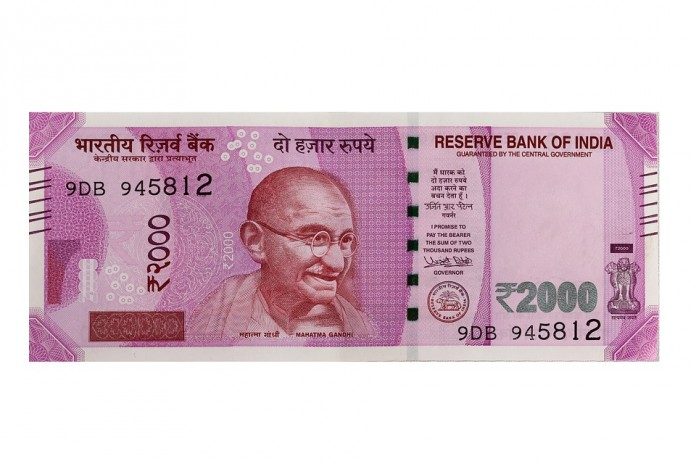This Article is written by Ajay Bhat, A Senior Corporate professional with over 27 years of experience in Corporate Finance.

Demonetisation was an innovative decision but it was least needed to serve the objective underlying its implementation. However, it is well realised that it was an economic decision taken with political objectives. History is witness to negative fallout of economic decisions taken to serve political motives. In my opinion, the timing of demonetisation was chosen ostensibly before some crucial state elections. Whatever was the wisdom behind its implementation, it was ill-planned, with manifestations of the dictatorial verdict.
It is generally believed that demonetisation was used to weed out black money. But the question is which black money?
After independence Indian economy has been running on two pillars of currency, one that ran through banking channels & other off banking channels. We assigned the definition of black money to the latter. Black money by definition and perception is the money, which doesn’t earn tax to the exchequer hence black. Is it really black, my interpretation is NO.
Cash in circulation also earns tax, How? Cash contributes to economic activity when a person uses the cash he buys goods or services which raises demand, such product or service comes into our GDP calculation & attracts tax more particularly indirect tax at the point of origination or in the value chain. Circulation of cash increased in the economy over a period of time & started to be called a parallel economy. The parallel economy generated employment, productivity, unascertained taxes and contributed to GDP. So Black is not the appropriate word to be coined, I may call it something between black & white.
I am not trying to justify, what I call a parallel economy or the use of cash. No cash has to go in the long run, it needs to get formalised, it needs to come in the banking channels, it’s not desirable for an economy of our size. The biggest negative feature of the cash economy is that it generates artificial asset pricing boosts inflation and works against the economic interest of lower strata of society and last but not the least is detrimental to the internal security of the country due to its misuse. Therefore it needs to be sterilised and formalised gradually without letting the economic activity broadly and direct and indirect employment adversely affected, but should not have been eroded through weapon like demonetisation.
- The first step to formalise the economy is to bring legislative changes. The Govt. had the mandate and numbers to bring in amendments in income tax, Companies Act to curb the use age of cash, which was anyways happening since last 10 years though gradually.
- Secondly, the use of technology in banking system & by tax departments, making it difficult for easy circulation of cash and its use in the large business transaction.
- Measures like AADHAR, linking of PAN with Aadhar & use of PAN in bank transactions, detailed KYC norms are designed to curb the usage of cash. All these measures never necessitated the introduction of demonetisation.
- When we are on the path of transition from an informal to the formal economy, the desired time for transition ought to have allowed. The regulatory system is capable of achieving the goals the legislation sets albeit over a period of time. We can’t ignore the fact that the cash economy has been in vogue since independence & grew in size and one sword of demonetisation can’t amputate it overnight. It required clinical but not a surgical strike. More importantly when the Govt. of the day was preparing for a historical legislative change in the firm of GST.
GST undoubtedly will remain a big milestone in the Indian economy. After years of haggling and tentative political will in the past, the Govt. really worked hard to introduce GST, which will remain a big historical milestone. GST was received with a mixed response by Business and industry. It was believed that the timing was premature and preparation to introduce GST was inadequate. But it may be accepted that legislation of this scale would have brought some amount of pain after implementation, which it did but eventually, the pain has subsided and GST is accepted norm without any talk of criticism. GST is a means of formalising the economy apart from being a single tax to replace a plethora of taxes. GST has significantly streamlined and formalised business and the movement of goods and services is backed by traceable documentation, thus has succeeded in cutting the usage of cash.
Hence, if the Govt. had the visibility of implementation of GST demonetization was never required to be pushed in and the sequential implementation of demonetization and GST had a serious fall out on small and medium businesses and wiped off a lot of employment in the process.

IBC Indian bankruptcy code was introduced in 2016, and it gained momentum & importance after the reference of first 12 large cases for resolution. The act in its original format was correct in essence & objective but the amendments later in Sec 29A barring existing promoters or anyone literary linked to Promoters in-eligible to participate in the resolution process was beginning of sacrificing the time-bound and judicious resolution of NPA’s the act aims to achieve. This is my personal opinion notwithstanding my association with Monnet, which was also referred to as IBC. Besides, I find no commercial merit in barring existing Promoters in resolution process subject to clearance of mismanagement or misappropriation through a forensic audit. The amendment also resulted in heavy losses to banks, as the Promoters would have been biggest competitors to outside bidders.
The elimination of Promoters has the following implications
-
- The bidding process for resolution would have been more competitive and banks would have certainly realised more money. The only caveat is that they should have been required to cough up full consideration upfront. A forensic audit should have established that no fraud led to the distress of the company. We have seen in the case of Essar, where the promoters are ready to offer the full amount of loan to lenders against outside bidding & the loss to the banks by not excepting the offer is whopping Rs. 10000 Crs. However, the argument is, why should the promoters be allowed to bid if they defaulted in the first case and were not inclined to show this curtsy before referencing to IBC. This argument is valid but doesn’t justify sacrificing amounts of thousands of crores, they would have been willing to cough up to win their companies back. It’s to be understood both on commercial & psychological variants that when an outsider bids he bids for a distressed asset but if the Promoter would bid he would have bid to reclaim an asset created by him and at a price which justifies the cost he was responsible hitherto.
- The issues of sources of money & ability of the defaulting Promoters could have been addressed by appropriate declarations at the time of bidding.
- It has created a plethora of litigations all instigated directly or indirectly by existing promoters defeating the basic objective of time bound resolution under IBC. If we see all the litigations in companies, which are yet to be resolved, the genesis of most of the litigations can be traced to Promoters.
- A blanket ban of Promoters has given a salient clearance to some of the promoters with a questionable track record. It is understood that the companies came under distress partly due to genuine business reasons & partly also due to mismanagement & misappropriation in some cases. While, debarring Promoters, who have been a victim of distress in a business and at the same time branding them in the category of Promoters with doubtful integrity is unfair and at the same time it has suited scurrilous Promoters to be kept out of the bidding and sent home with a clean character certificate,
Hence the decision of introducing section 29a is a lateral decision sparked by political considerations. I may repeat my charge that economic decisions under the wrap of political overtones aren’t sound commercial calls, though legal justification is quite flexible.
Now I come to the suitability of this law in resolving the NPA’s, if we trace the success of this law so far after it was put to active implementation, data suggests that the IBC as an instrument of NPA recovery has achieved subdued success despite being a time bound process. The act is more relevant for resolution of large assets, which can attract good response from investors, it cannot & will not be seen to be effective for smaller assets, with less visibility & limited information. Most of smaller assets may end up in liquidation, source of potential loss to bankers. This could be the reason for banks to prefer OTS than IBC as the current trend suggests.
The bidding process under the IBC is open to multiple questions, the focus is more on the liability side of the balance sheet both by the lenders as well as the bidders and on the relative plant capacity by bidders as a parameter for bidding. The value of bidding is hugely influenced by the strategic value accruing to the bidder. We have seen in a couple of large cases like Bhushan Steel and Essar Steels, the bidding has been unexpectedly high not necessarily driven by the quality of assets but the strategic premium the bidders have priced in. It is believed that replicating assets of 5 to 10 million tons capacity is a long process in India, therefore, the bidders have preferred to pay a huge premium to claim the assets notwithstanding the viability of the proposed bid amount. However such assets offering strategic values to bidders of the level of Tata and Arcelor Mittal are very rare and can be counted on fingers. Rest of the bidding has so far been influenced by the number of participants and willingness of the bidders to offer, keeping the threshold of super guaranteed viability consequent to the takeover. Unfortunately, the bidding process has not laid down a mechanism of bidding based on the value of the individual asset and or linking the bidding amount on the declared fair value arrived by the lenders with the participation of expert agencies to make the bidding process competitive, fair and a bit demanding.
The situation is much worse when it comes to smaller companies referred to under IBC. The information available in the public domain which can be relied on by the potential bidders and a fair estimation of their viability is making the bidding process highly skewed against the interest of the lenders which has the consequence of heavy sacrifices absorbed by the lenders in small assets. So far resolution of smaller companies has resulted in massive hair cuts to lenders. Unless this lacuna and process is properly plugged, IBC for resolution of smaller assets would be a serious disadvantage to the lenders.
Liquidation is the step-down solution under IBC is another area of concern. Liquidation is a complex exercise in India and may become a web of intertwined litigations & consequent destruction of assets. No time limit is assigned under the law to complete liquidation. It may become a beehive for the managers & liquidator to run the process without any boundaries of time. Liquidation in India with multiple stakeholders and bunch of applicable laws might make process painful, costly and with countable pennies in hands of lenders. Hence the law needs more maturity and deep overhaul, one to stop litigations during the process and create better price discovery mechanism and a time bound, well orchestrated liquidation plan.
Implications of demonetisation, GST & IBC
Demonetisation killed small business and SME sectors overnight. These businesses were essentially surviving on cash currency for years. They deserved to be gradually taken out and migrated to the formal economy, which was the role of GST. So if demonetisation was a ruthless option of weeding cash out of the system, GST is a legislative and formal process of discouraging cash play in businesses. Hence if the Govt. planned to implement GST, demonetisation few months ahead was a worthless exercise and will never be remembered with respect.
Both GST & demonetisation have shifted business from smaller & medium enterprises to relatively larger enterprises. Larger enterprises have benefitted by scaling up their balance sheet in the process. Hence the twin developments in the last few years may have churned many businesses in India, creating geographical & employment disparities. India, on the whole, has lost millions of jobs after the introduction of demonetisation particularly.
Similarly, IBC is unarguably exchanging the ownership of assets to existing established players in their sectors making them large players, larger as in the case of TATA, Vedanta & Now Arcelor. This consolidation of business isn’t healthy for a competitive economy with an underlying objective of secular social upliftment. It can create monopolistic situations in a society dominated by poor, lower middle class & middle class. When legislation is created, its implications on society, as a whole needs careful consideration. The impact of sweep in businesses under demonetisation, GST & IBC in favour top companies can have serious long term implications on the growth of employment which has to be a fundamental objective of any economic & political agenda of any government. Large companies use technology & process efficiency to scale up business & not necessarily additional manpower thus growth in the size of large companies is not linear to growth in employment and at the same time, they get the power to control markets both unhealthy for our society.
We cannot reverse demonetisation, we can simplify GST to give more breath to small & medium businesses. But we need a retake at IBC, overhaul the law to address the salient but deadly implications in the long run.
 Serato DJ Crack 2025Serato DJ PRO Crack
Serato DJ Crack 2025Serato DJ PRO Crack










 Allow notifications
Allow notifications



